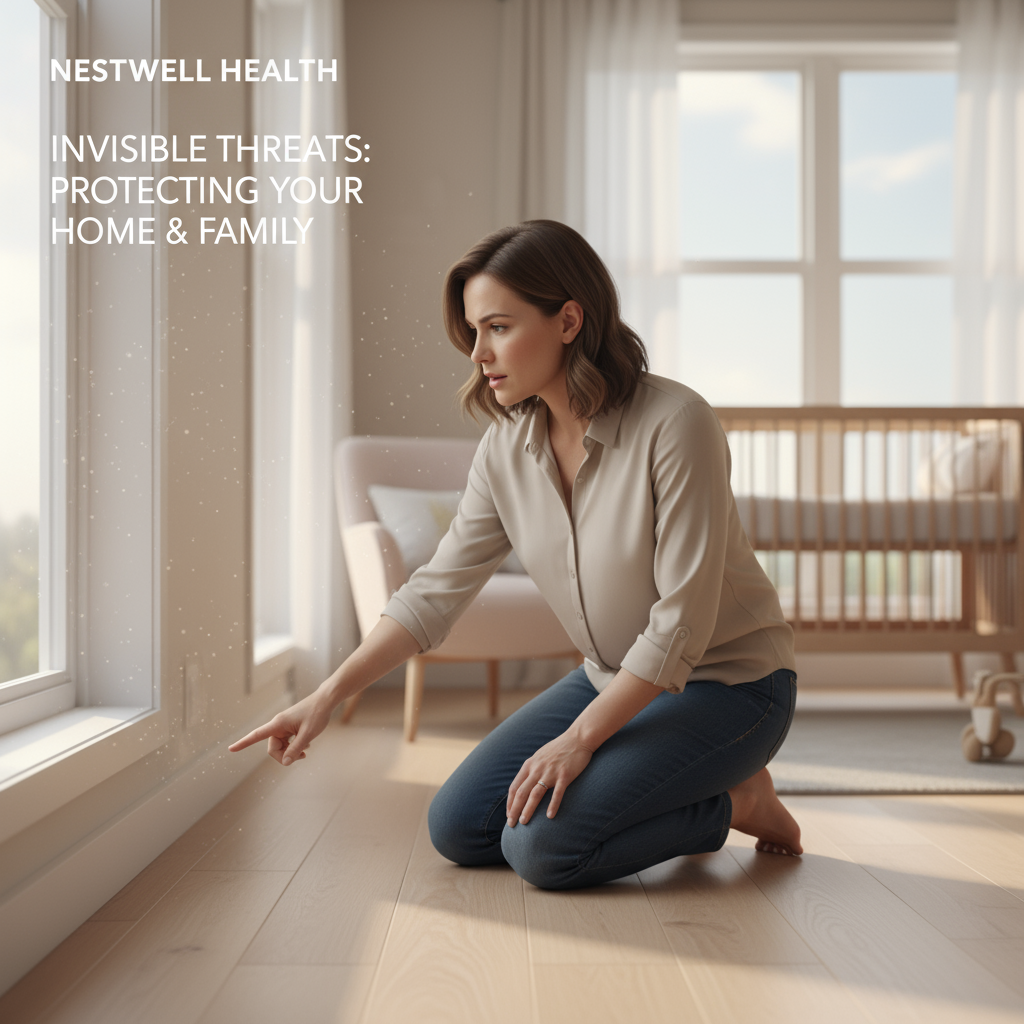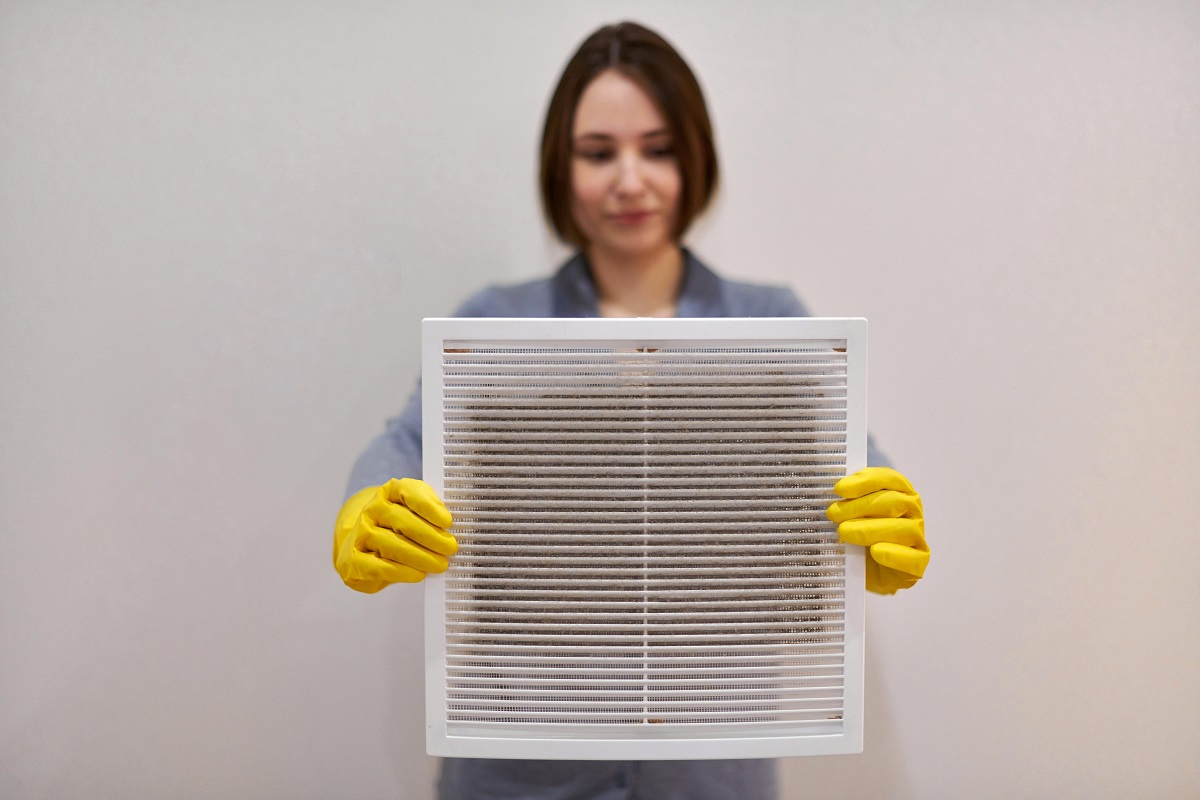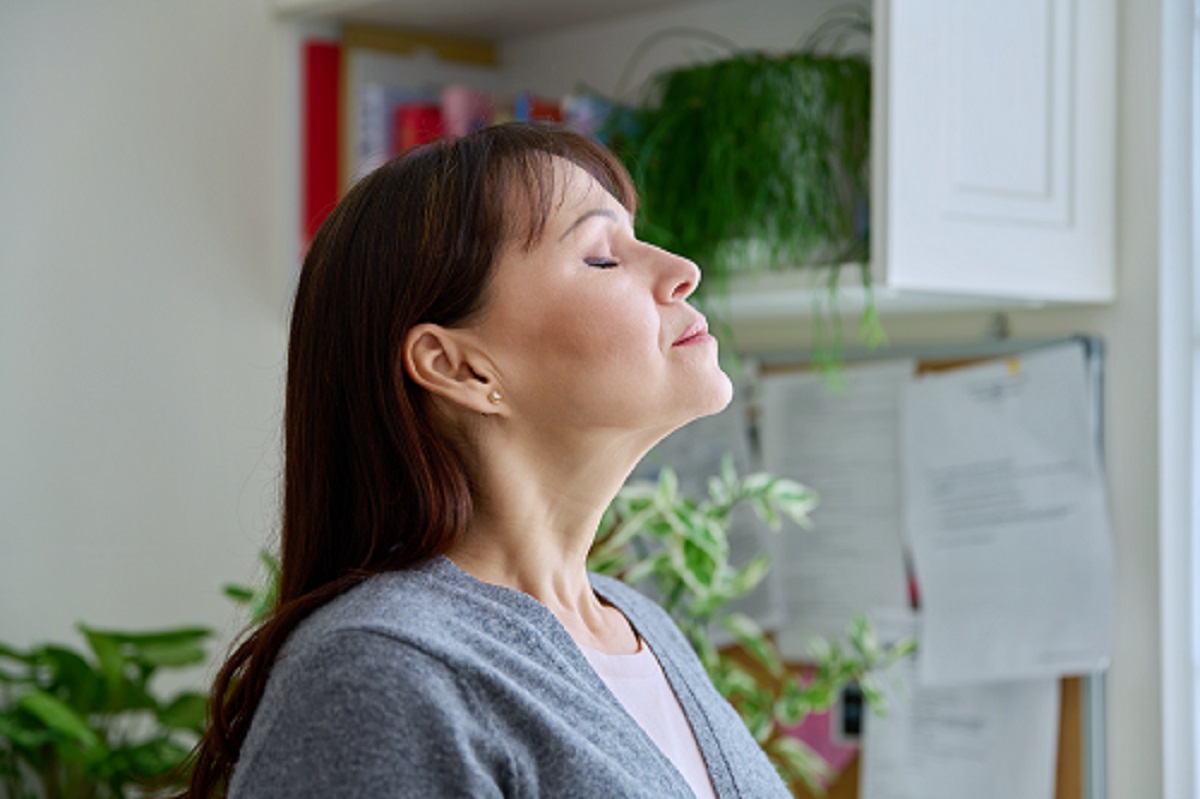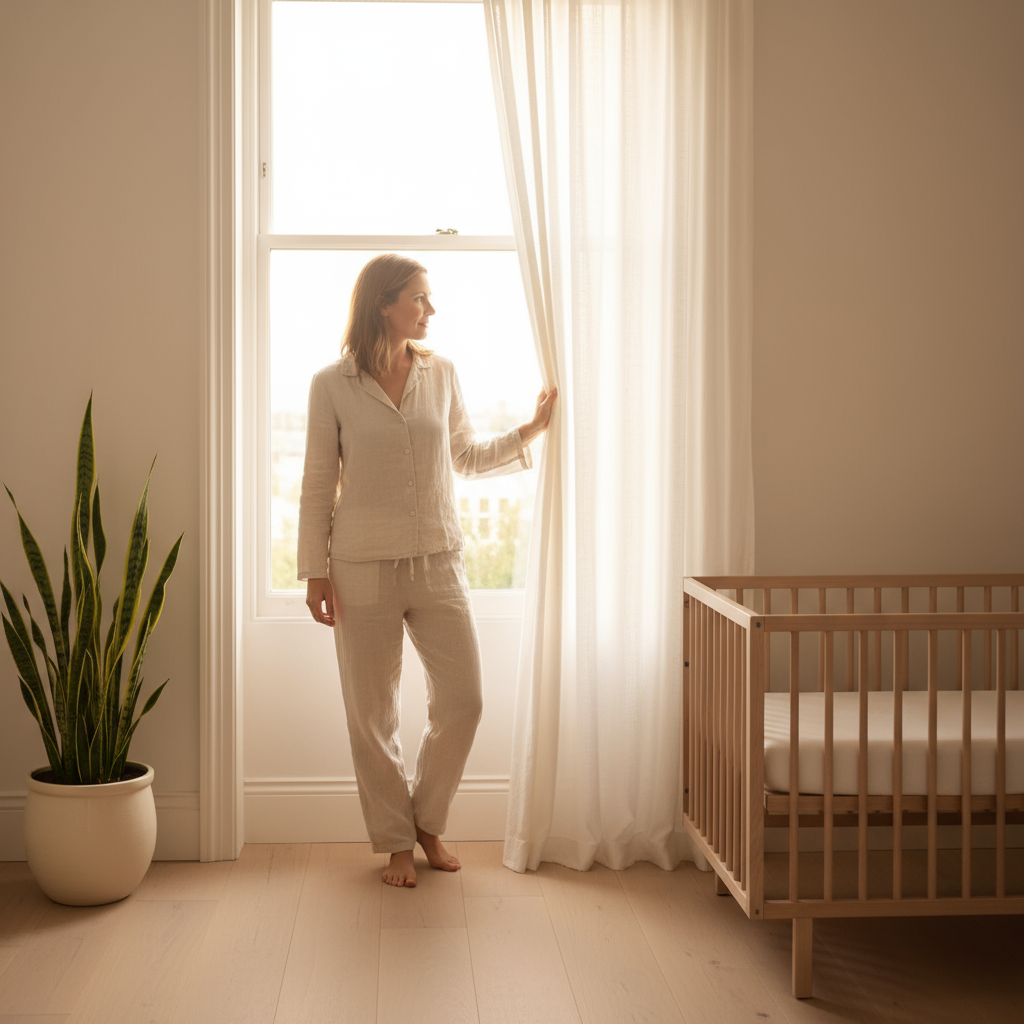How to Test for Mold at Home: A Guide to a Healthier Family

How to Test for Mold at Home: A Guide for a Healthier Family
Key Takeaways
- Identify Quickly: Watch for tell-tale signs of mold in house, such as musty odors, visible spots of discoloration, and areas with past or present water damage.
- Know the Risks: Understand the serious health effects of mold in home, which range from allergies and asthma to more severe respiratory and neurological issues, especially in children and older adults.
- Choose a Test: While there are simple DIY mold testing methods, for a more accurate assessment, consider using one of the best mold test kits for home that includes third-party lab analysis to identify the type and concentration.
- Think Holistically: Testing for mold is just the first step. Ensuring long-term home safety and managing the health impacts requires a comprehensive environmental and health strategy, which is where NestWell Health's specialized virtual care excels.
Table of Contents
Introduction: Your First Step to a Healthier Home
Is that lingering musty smell in your basement or a persistent cough that won't go away making you worry about hidden mold? You're right to be concerned. Learning how to test for mold at home is a critical first step in protecting your family’s well-being and ensuring your living space is truly safe. This simple action can reveal hidden problems that impact the air you breathe every day.
Mold is far more than just an ugly stain on the wall or a bad smell in the laundry room; it's a potential health hazard that can have significant consequences. This threat is especially serious for the most vulnerable members of our families, such as aging parents aiming to live independently or newborn babies with developing immune and respiratory systems. Unchecked fungal growth can turn a comfortable home into a source of chronic illness.
This guide will walk you through everything you need to know about identifying and testing for this unwelcome guest. We'll cover the signs to look for, the different testing options available, and the crucial steps to take after you get your results. We'll also explain how professional support can help you create a permanently healthy home ecosystem for those you care about most, moving beyond a simple test to a complete solution for well-being.
What Are the Health Risks? Understanding the Dangers of Mold Exposure
Ignoring mold or simply painting over a discolored patch can lead to a variety of health issues, some of which can be quite serious. The reason for this is that mold releases tiny spores into the air. When inhaled, these spores can trigger allergic reactions and cause inflammation in the respiratory system. The level of risk often depends on the type of mold, the amount of exposure, and an individual's unique health status. Understanding these potential health effects of mold in home is the first step in recognizing the urgency of the problem.
For many people, the symptoms are similar to seasonal allergies, but they persist year-round and worsen inside the home. This can lead to a constant state of feeling unwell without an obvious cause. The most common symptoms related to mold contamination include:
- Respiratory Problems: This is the most widely reported category of mold-related health issues. It can manifest as flare-ups in people with asthma, persistent coughing that doesn’t respond to cold medicine, wheezing, shortness of breath, and chest tightness. For those with allergies, it can cause immediate reactions like sneezing and nasal congestion.
- Neurological Symptoms: Certain types of mold produce mycotoxins, which are toxic substances that can affect the nervous system. Prolonged exposure can lead to unexplained headaches or migraines, chronic fatigue that isn't relieved by rest, and difficulty concentrating, often described as "brain fog."
- Skin Irritation: Direct contact with mold spores or airborne exposure can lead to skin problems. This can include unexplained rashes, itchy skin, and hives. These symptoms can be particularly frustrating as they may be misdiagnosed as other dermatological conditions.
- Sinus Congestion and Runny Nose: Constant inflammation of the nasal passages is a classic sign of an indoor allergen problem. If you find yourself constantly dealing with a stuffy or runny nose, post-nasal drip, or sinus pressure while at home, mold could be the hidden culprit.
The Reason Why Mold Is a Greater Threat to Certain Family Members
While anyone can be affected by mold, some individuals are at a much higher risk for severe reactions. The presence of mold in a home can shift from a minor nuisance to a major health emergency depending on who lives there. This is why a one-size-fits-all approach to home health is not enough.
For Aging Adults: Older adults often have weakened immune systems or pre-existing health conditions like Chronic Obstructive Pulmonary Disease (COPD). For them, mold exposure can lead to serious respiratory infections, such as pneumonia or hypersensitivity pneumonitis, a severe inflammation of the lungs. This type of environmental hazard can directly undermine their ability to age in place safely and independently, turning their once-safe home into a source of declining health and frequent hospital visits.
For Perinatal Health: The period before and after birth is a time of heightened vulnerability for both mother and child. Research suggests that significant mold exposure during pregnancy could pose risks to the developing fetus. After birth, infants are especially susceptible. Their immune systems are not fully developed, and their lungs are still growing. Living in a mold-contaminated environment can lead to respiratory distress, the development of asthma later in childhood, and other potential developmental issues. Ensuring a clean, toxin-free "nest" is crucial for a healthy start in life.
How Can I Tell If I Have Mold? Key Signs to Look For
Before you even purchase a test kit, your own senses are powerful tools for detection. Mold often provides clear clues that it has taken up residence in your home. Being vigilant and knowing what to look for can help you pinpoint problem areas early. Here are the key signs of mold in house to watch out for:
- The Smell: This is often the first and most obvious indicator. A persistent musty, damp, or earthy odor is a classic sign of microbial growth. You might notice it's stronger in specific areas, like a basement, a laundry room, under a sink, or inside a closet. Don't ignore this smell, even if you can't see any visible growth. It often means mold is growing behind a wall, under flooring, or in a crawlspace.
- The Sight: Visible mold is the most undeniable sign. This fungus can appear in many colors, including black, green, white, gray, or even orange. It might look like small, fuzzy specks, large velvety patches, or a slimy film. Pay close attention to areas that are frequently damp, such as bathroom tiles and grout, window sills where condensation collects, and ceilings or walls that have water stains. Peeling wallpaper or bubbling paint can also be a sign of moisture behind the surface, creating a perfect breeding ground for mold.
- The Feeling: Your body can act as a mold detector. If you find that your allergy symptoms—like sneezing, itchy and watery eyes, or a scratchy throat—seems to flare up when you're at home but get better when you leave, it's a strong indicator of an indoor allergen. A persistent cough or unexplained headaches that follow this same pattern also point toward an environmental issue within your living space.
- The Evidence: Look for signs of past or present water problems. Water is the key ingredient for mold growth. Evidence of water damage is a major red flag. This includes water stains on ceilings or walls, warped wooden floors or baseboards, areas of peeling paint, or visible condensation on pipes or windows. Even if a leak was fixed months ago, the moisture left behind could have been enough to start a hidden mold colony.
How to Test for Mold at Home: What Are My Options?
If you've noticed any of the signs above or simply want peace of mind, testing is the next logical step. Deciding how to test for mold at home can feel confusing because there are several options available, each with its own pros and cons. Understanding these choices will help you select the right method for your situation.
Option 1: Basic DIY Mold Testing Methods
For a quick and inexpensive initial check, there are a few simple DIY mold testing methods you can try. These methods are not scientific and won't give you detailed information, but they can sometimes help you distinguish between mold and simple dirt or mildew.
The most common DIY approach is the "bleach test," which is only useful for non-porous surfaces. Mix one part household bleach with 16 parts water. Dab a small amount of this solution onto the suspicious spot with a cotton swab. Wait a minute or two and observe the area. If the spot lightens or disappears completely, it is likely mildew, a type of surface-level fungus. If the spot remains dark, it might be dirt or a more ingrained type of mold that the bleach can't reach.
Remember, these methods are not definitive and won't tell you if you have an airborne mold problem. They can't identify the type of mold, nor can they tell you the concentration of spores in the air, which is a critical factor for assessing health risks.
Option 2: Using the Best Mold Test Kits for Home
For a more reliable result that provides actionable information, you'll want to select from the best mold test kits for home that offer professional lab analysis. These kits bridge the gap between a simple visual check and a costly professional inspection. They empower you to collect a sample yourself and then have it analyzed by experts.
There are three main types of at-home kits that include lab analysis:
- Settle Plate (Petri Dish) Kits: This is the most common type. You receive a petri dish containing a growth medium. You place it in a room for a specified amount of time (usually a few hours) to allow airborne spores to settle on it.
- Tape Lift Kits: These are used for testing visible mold growth. The kit provides a special piece of sterile tape that you press against the surface to collect a sample of the growth.
- Air Sampling Kits: These are more advanced and often involve using a vacuum pump (sometimes included or rented separately) to pull a set volume of air through a collection cassette. This provides a snapshot of the spore concentration in the air at that moment.
Regardless of the type, the process for using a quality kit is generally the same:
- Purchase a Kit: Choose a reputable kit that clearly states it includes analysis by an accredited laboratory. Check if the lab fee and return postage are included in the initial price.
- Collect the Sample: Carefully read and follow the instructions. This is the most important step for getting an accurate result. Contaminating the sample can lead to incorrect readings. For an air sample, this means setting up the collection plate in a non-drafty area away from open windows.
- Seal and Mail: Once the sample is collected, you will seal it securely in the provided packaging. Fill out any required information about where the sample was taken and then send it to the lab using the provided mailer.
- Receive Your Report: In about a week or two, the lab will email you a detailed report. This professional document will identify the specific types of mold present in your sample and, in many cases, provide a quantitative analysis (e.g., spores per cubic meter of air) that tells you the concentration of the contamination.
Pros of Lab-Analyzed Kits
Cons of Lab-Analyzed Kits
Much more affordable than a full inspection
Prone to user error during sample collection
Identifies the specific type of mold present
Provides only a snapshot in time; not a full scope
Provides data on the concentration of spores
Results can be difficult to interpret for a layman
Offers scientific evidence of a problem
Doesn't identify the source of the moisture
Option 3: When Should I Call a Professional?
Sometimes, a DIY approach isn't enough, and you need to bring in an expert. A professional mold inspector has advanced tools like moisture meters and thermal imaging cameras to find hidden mold and the source of the water that is feeding it. You should call a professional mold inspector if:
- You have widespread visible mold covering a large area (typically more than 10 square feet).
- A family member is in a high-risk group (such as an infant, an elderly person, or someone with a compromised immune system) and is experiencing health symptoms.
- You've recently had significant water damage from a flood, burst pipe, or roof leak.
- You suspect mold is growing inside your HVAC system.
- You want a comprehensive assessment that includes a full remediation plan.
Beyond the Test: How NestWell Health Creates a Truly Safe Home
A mold test is a powerful tool. It can confirm a problem and identify the type of fungus you're dealing with. But the test itself doesn't solve the problem. Creating a durably healthy home, especially for vulnerable family members, requires a holistic look at the entire living environment. It's about fixing not just the symptom (the mold) but the underlying cause (the environmental conditions). This is where NestWell Health provides a comprehensive, forward-thinking solution that goes far beyond a simple test result.
For Safe and Healthy Aging-in-Place
Mold often thrives in conditions like poor ventilation in a stuffy bathroom, a slow, hidden leak under a kitchen sink, or excessive humidity in a basement. These are precisely the kinds of environmental hazards that can compromise the safety and health of an older adult living alone. A spot of mold on a wall might be a sign of a much larger issue that impacts fall risk, air quality, and overall well-being.
Our virtual Occupational Therapists specialize in this area. Through secure video calls, they conduct comprehensive home safety assessments, looking at the home through a clinical lens. They can identify these environmental risks and understand how they fit into the bigger picture of a person's health. They then create a personalized plan to not only address the triggers for mold growth but also to ensure the entire home is a safe, accessible, and supportive ecosystem that promotes genuine independent living.
For Comprehensive Perinatal and Family Care
For expecting parents, "nesting" is a powerful instinct to prepare a safe and nurturing home for their new arrival. Discovering mold during this critical time can be incredibly stressful. The health of the mother and the developing baby is the top priority, and environmental safety plays a huge role.
NestWell Health's multidisciplinary perinatal care team provides integrated virtual support to guide families through this process. Our team—which includes nurses, therapists, and nutritionists—works together to address your concerns from every angle. We can help you understand the potential health impacts, navigate the steps for creating a home free of environmental toxins like mold, and manage any health concerns that may arise for both mother and baby. This wraparound care ensures that your home is a healthy foundation for your growing family.
Conclusion: Take the Next Step Toward a Healthier Home
You now have a clear roadmap for addressing potential mold issues in your home. You can identify the warning signs; you understand the serious health risks; and you know the different ways to test for this hidden threat. Now that you know how to test for mold at home, you have the power to take the first, most important step toward creating a healthier living environment for your family.
But a healthy home is more than a single test. It's an ongoing commitment to creating a safe and supportive ecosystem where your loved ones can thrive. The information from a test is just the beginning of the journey. The real solution lies in using that knowledge to make meaningful, lasting changes to the environment.
Whether you are supporting a parent to age in place safely and with dignity or ensuring your home is a pure, healthy environment for your growing family, don't do it alone. Partner with NestWell Health. Our innovative virtual care and home ecosystem solutions provide the expert guidance and comprehensive support you need. Contact us today to learn how we can provide peace of mind for you and your loved ones.
Frequently Asked Questions (FAQ)
Q: What are the most common signs of mold in house?
A: The most common signs are a persistent musty smell that you can't locate, visible black, green, or white specks or patches growing on walls or ceilings, evidence of past or present water damage like stains or warped wood, and a noticeable worsening of allergy or asthma symptoms only when you are at home.
Q: How accurate are DIY mold testing methods?
A: Simple DIY mold testing methods, like the home remedy bleach test, are not very accurate. They can sometimes suggest the presence of surface mildew but are not conclusive and cannot detect airborne spores. For better accuracy, at-home kits that include professional lab analysis are a significant improvement, though a full inspection by a certified professional remains the most reliable method.
Q: What are the most dangerous health effects of mold in home?
A: While most health effects are allergic in nature, such as coughing and sneezing, the most dangerous health effects of mold in home can be severe, especially for vulnerable individuals. These include serious asthma attacks, hypersensitivity pneumonitis (a severe lung inflammation), and opportunistic fungal infections in people with compromised immune systems. Certain molds also produce mycotoxins that can lead to neurological issues.
Q: What should I look for in the best mold test kits for home?
A: When searching for the best mold test kits for home, the single most important feature to look for is the inclusion of professional, third-party lab analysis. A kit that only provides a petri dish to see if "something" grows is not very useful. You want a kit that will send your sample to an accredited lab that can identify the specific mold types present and their concentration, as this is the data needed to assess the health risk.
Q: If I find mold, how can NestWell Health help my elderly parent?
A: If mold is discovered in your elderly parent's home, NestWell Health can provide critical support. One of our Occupational Therapists can perform a virtual home assessment to identify the underlying environmental cause, such as poor ventilation or a hidden leak. They will then integrate solutions into a comprehensive aging-in-place plan, which not only addresses the mold hazard but also enhances overall home safety to support your parent's health, independence, and well-being.
Stop testing individual problems. See the whole picture.
Ready to discover everything hiding in your air, water, and environment? Book your Comprehensive Home Health Assessment today.
Book Your Home Health Assessment Now!






